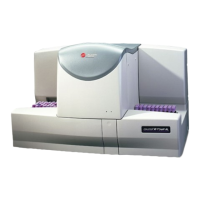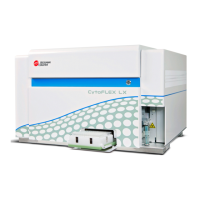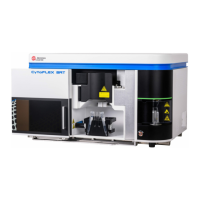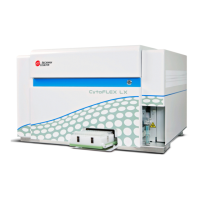PN 177196BB
7-23
DATA MANAGEMENT AND REVIEW
DATA ANALYSIS REVIEW - RBC PARAMETERS
7
c. The following is an example of an RBC histogram with a normal RBC size
distribution.
.
RDW Determination
1. RDW (Red cell Distribution Width) is an index of the variation or spread in the size of
the red blood cells.
a. Study of RBC distribution detects erythrocyte anomalies linked to anisocytosis and
enables clinician to follow evolution of the width of the curve relative to the cell
number and average volume:
1) Generally, as the red cell variation increases, width of the distribution curve
broadens and visible asymmetry of the distribution curve is more likely.
2) Width of the distribution curve, however, does not always indicate a true
increase in size variation.
b. RDW index more accurately detects red cell variation than a visual inspection of the
histogram (unless two distinct populations of cells are present).
Note: A primarily microcytic population of red cells (decreased MCV) tends to have
a tighter distribution (lower SD) than a normocytic population. A primarily
macrocytic population of red cells (increased MCV) tends to have a wider
distribution (higher SD) than a normocytic population.
2. RDW is calculated using the standard deviation (SD) of the RBC population and the
MCV and is displayed and printed as a percentage.
where:
K = System constant
SD = Calculated standard deviation based on the red cell distribution
MCV = Mean Cell Volume of the red cells
30 300
7616036
K SD
MCV
---------------
RDW (%)=

